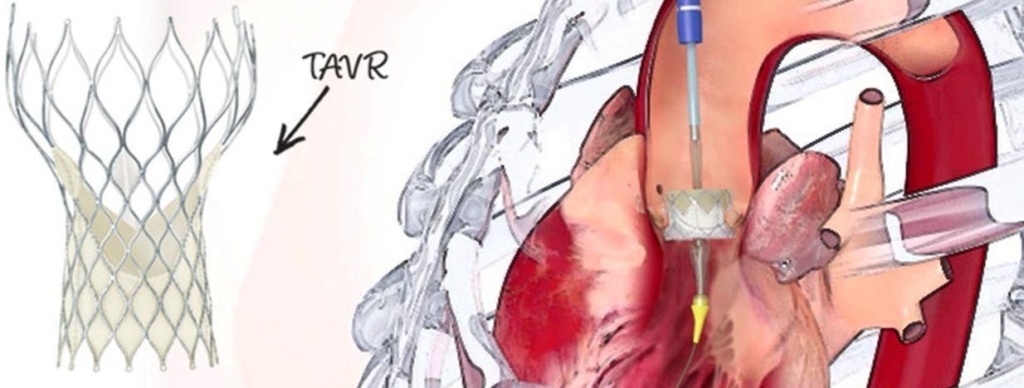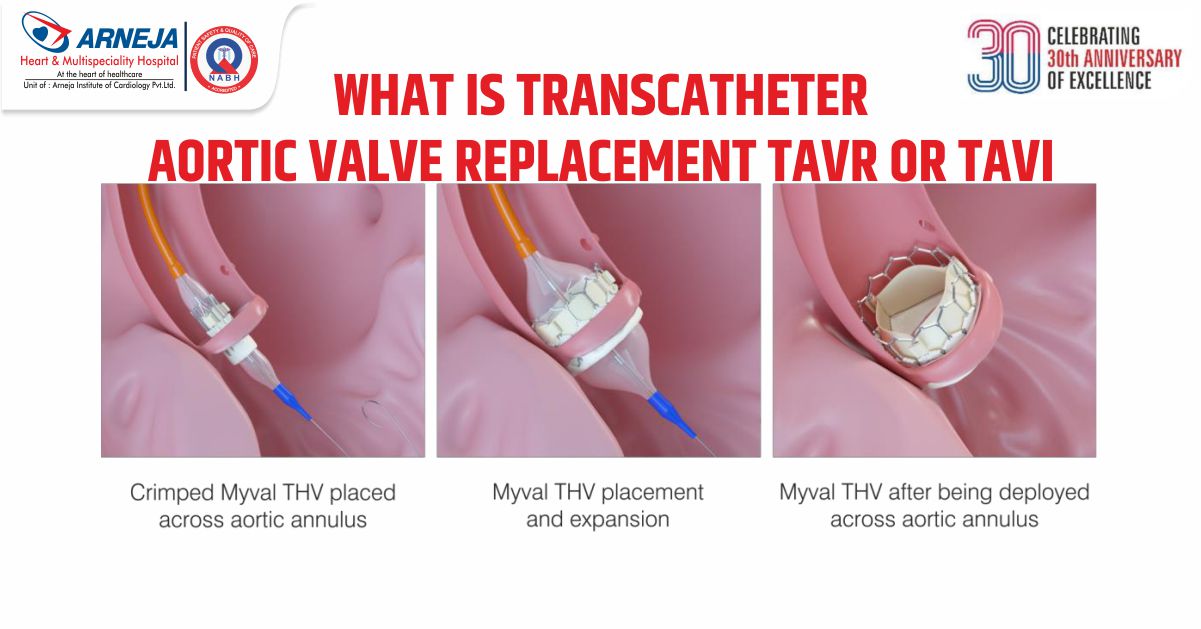What is Transcatheter Aortic Valve Replacement TAVR OR TAVI?
Transcatheter aortic valve replacement (TAVR) is a procedure that replaces a diseased aortic valve with a man-made valve. Aortic valve replacement can also be performed with open-heart surgery; this procedure is surgical aortic valve replacement (SAVR).
Your aortic valve controls blood flow from your heart to your body. If your valve becomes stiff, you have a condition called aortic stenosis. Your heart may have to work too hard to pump blood through the small valve opening to the rest of your body. This may lead to increasing heart failure.

Why TAVR?
Transcatheter Aortic Valve Replacement (TAVR) is used for patients with aortic stenosis, who are very weak and cannot tolerate a major heart surgery. TAVR is a novel procedure which is well tolerated by many patients for whom an open heart surgery is considered to be risky.
High-risk aortic stenosis repair with TAVR
TAVR is indicated for a patient with intermediate or high-risk for complications related to surgical aortic valve replacement. This helps avoid surgical complications due to:
• Old age
• Previous heart surgery
• Kidney disease
• Lung disease
• Diabetes
• Calcified aorta
The inability of the aortic valve to fully open and close is referred to as stenosis. The heart must work harder to execute the ordinarily routine task of pumping blood to the body because the blood flow through the chambers is impeded. As a result, the patient starts having episodes of blackouts, chest pain, swelling ankles, and dyspnoea. Therefore, aortic valve replacement is crucial to fully treating the patient’s valve abnormalities and related symptoms.

The advantages of TAVR over open surgery include the following:
• It is a minimally invasive technique that may be carried out in the cathlab.
• The surgery left no noticeable scars.
• 3–4-day hospital stay that is shorter.
• Quick return to daily activities upon discharge. Patients with major medical issues are at lower risk.
Due to the low risk of the TAVI surgery, patients can recover fast and without any postoperative complications.
Care after TAVR
After TAVR, you should always examine the insertion site with clean, cleaned hands. It’s typical to have some mild redness, soreness, and clear discharge. Immediately contact your physician or the TAVI coordinator if you see:
• Pus or drainage
• A lump that is enlarging
• Any area of redness or warmth
Also if you Notice
• Fever or flu-like symptoms
• Pain or discomfort in the groin
• Pain or chest pain or breathlessness Contact the emergency if you experience:
• Shortness of breath or chest pain that remains unrelieved.
• Breathlessness even at rest — Needing to sit on chair to sleep
TAVR at Arneja Heart and Multispeciality Hospital
At Arneja Heart and Multispeciality Hospital is one of the leading centre of excellence for heart care in India. Our team in the Institute of Cardiology includes leading cardiac surgeons, cardiac anaesthesiologists, cardiac radiologists, and interventional cardiologists who evaluate and treat each patient jointly. Interventional cardiologists and surgeons at Arneja Heart and Multispeciality Hospital are trained in the advanced technologies such as TAVR and have extensive experience in performing the procedure. The institute has infrastructure and resources that work in tandem with our cardiologists’ knowledge to provide the best possible patient care during difficult surgeries and procedures.
To know more about heart surgery, and for any Cardiac Emergencies call us on: 0712-666-1800 / 91-9923404277

